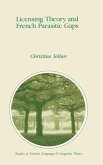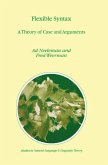
Gebundenes Buch
1991.
31. Oktober 1991
Springer Netherlands
| Broschiertes Buch | 41,99 € | |
| eBook, PDF | 40,95 € |

Broschiertes Buch
Softcover reprint of the original 1st ed. 1991
31. Oktober 1991
Springer / Springer Netherlands
978-0-7923-1323-6
eBook, PDF
6. Dezember 2012
Springer Netherlands
Ähnliche Artikel

Broschiertes Buch
A Government-Binding Approach
1986.
28. Februar 1986
Springer / Springer Netherlands
978-90-277-2015-3

Gebundenes Buch
A Government-Binding Approach
1986
28. Februar 1986
Springer / Springer Netherlands
978-90-277-2014-6

Broschiertes Buch
A Theory of Case and Arguments
1999
30. September 2001
Springer / Springer Netherlands
978-0-7923-7199-1

Gebundenes Buch
A Theory of Case and Arguments
2000.
30. November 1999
Springer / Springer Netherlands
978-0-7923-6058-2

Broschiertes Buch
Nominalizations in Quechua
1988.
31. Mai 1988
Springer / Springer Netherlands
978-1-55608-051-7

Gebundenes Buch
Nominalizations in Quechua
1988.
31. Mai 1988
Springer / Springer Netherlands
978-1-55608-050-0

Gebundenes Buch
Infinitival Complements
1990.
28. Februar 1990
Springer / Springer Netherlands
978-0-7923-0432-6

Broschiertes Buch
Infinitival Complements
1990.
28. Februar 1990
Springer / Springer Netherlands
978-0-7923-0433-3

Broschiertes Buch
1996.
15. März 1996
Springer / Springer Netherlands
978-0-7923-3674-7
Ähnlichkeitssuche: Fact®Finder von OMIKRON
